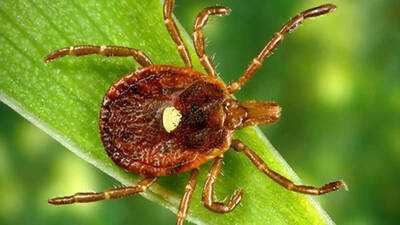
Ever thought you could get sick by contracting an allergic infection from eating red meat?
A growing health concern is emerging across the United States of America: an allergy to red meat and other mammalian products. Known as alpha-gal syndrome (AGS), this condition develops after a tick injects a sugar molecule called alpha-gal into the bloodstream, eventually triggering allergic reactions to red meat, dairy, or gelatin hours after eating them.
With cases rising sharply across the US, especially in suburban and tick-prone regions, recognizing early symptoms, understanding who’s most at risk, and learning prevention strategies are more important than ever.
Why the allergy is on the rise
Alpha-gal syndrome is an allergic reaction caused by tick bites , particularly from the lone star tick , which injects the sugar molecule galactose-alpha-1,3-galactose (alpha-gal) into human blood. In sensitized individuals, the immune system reacts to alpha-gal found in red meat and other mammal products, triggering allergy symptoms hours later.
This allergy is becoming more widespread. The CDC estimates about 110,000 confirmed cases, but up to 450,000 Americans may be affected and undiagnosed. In regions like Kansas, Missouri, and Martha’s Vineyard, cases are surging, up from just a couple to hundreds over recent years.
The expanding tick population, fed by climate change and rising deer numbers, is pushing lone star ticks into new areas, increasing the risk.

Early symptoms to watch for
Alpha-gal syndrome is unique because symptoms typically appear 2-6 hours after consuming mammalian products, an unusual delay compared to most food allergies.
Key warning signs include:
Hives, itchy rash, or swelling of the lips, face, throat, or eyelids
Gastrointestinal upset, such as stomach pain, nausea, vomiting, diarrhea, or heartburn
Respiratory issues, including coughing, wheezing, or shortness of breath
Dizziness, drop in blood pressure, or faintness, especially if episodes escalate to anaphylaxis, which can be life-threatening
Because the reactions to the allergy can vary or even shift between episodes, it’s easy to mistake symptoms for food poisoning or other illnesses.
Who’s at risk of infection
Anyone bitten by certain tick species may develop AGS, even if they've never had food allergies before. But risk is higher for:
Adults living in tick-populated suburban or rural areas, particularly those spending time outdoors during April to September, when lone star ticks are most active.
People who are repeatedly exposed to tick bites, especially those unaware of or not promptly removing ticks from their skin.

Prevention tips: How to protect yourself
Avoid tick bites in the first place: Wear long sleeves, long pants, and closed shoes when outdoors. Use EPA-approved repellents (like those with DEET). Treat clothing and gear with 0.5% permethrin.
Perform diligent tick checks after being outdoors: Shower soon after and wash clothes in hot water. Carefully remove attached ticks using tweezers with steady, even pressure. Avoid squeezing the tick’s body to reduce transmission risk, or use freezing spray to remove them intact.
Stay vigilant with symptoms: If you notice delayed allergic reactions after eating red meat or possibly dairy or gelatin, speak with a healthcare provider. Blood tests for alpha-gal-specific IgE and detailed medical histories help confirm the diagnosis.
Manage the condition: Avoid red meat and mammal-derived products as needed. Carry an epinephrine auto-injector if prescribed, especially if you’ve experienced severe reactions.
-
From Shubman Gill's practice partner in India to UAE rival in Asia Cup, who is spinner Simranjeet Singh?

-
France set for disruption as new Prime Minister takes office

-
Nepal President Paudel to meet 'Gen Z' protestors, urges peaceful resolution through dialogue

-
Ghost Shark: Australia to roll out fleet of underwater attack drones

-
Poland engages drones in its airspace during Russian attack on Ukraine
